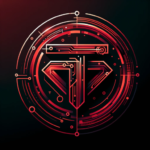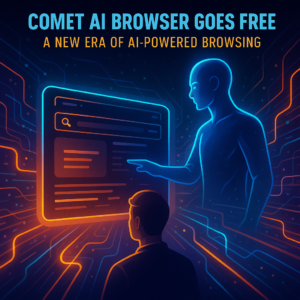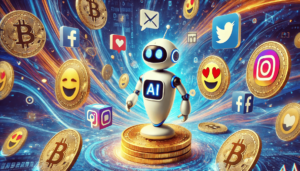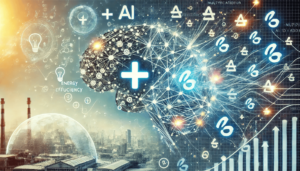AI’s Tug of War: Copyright and Ethical Dilemmas
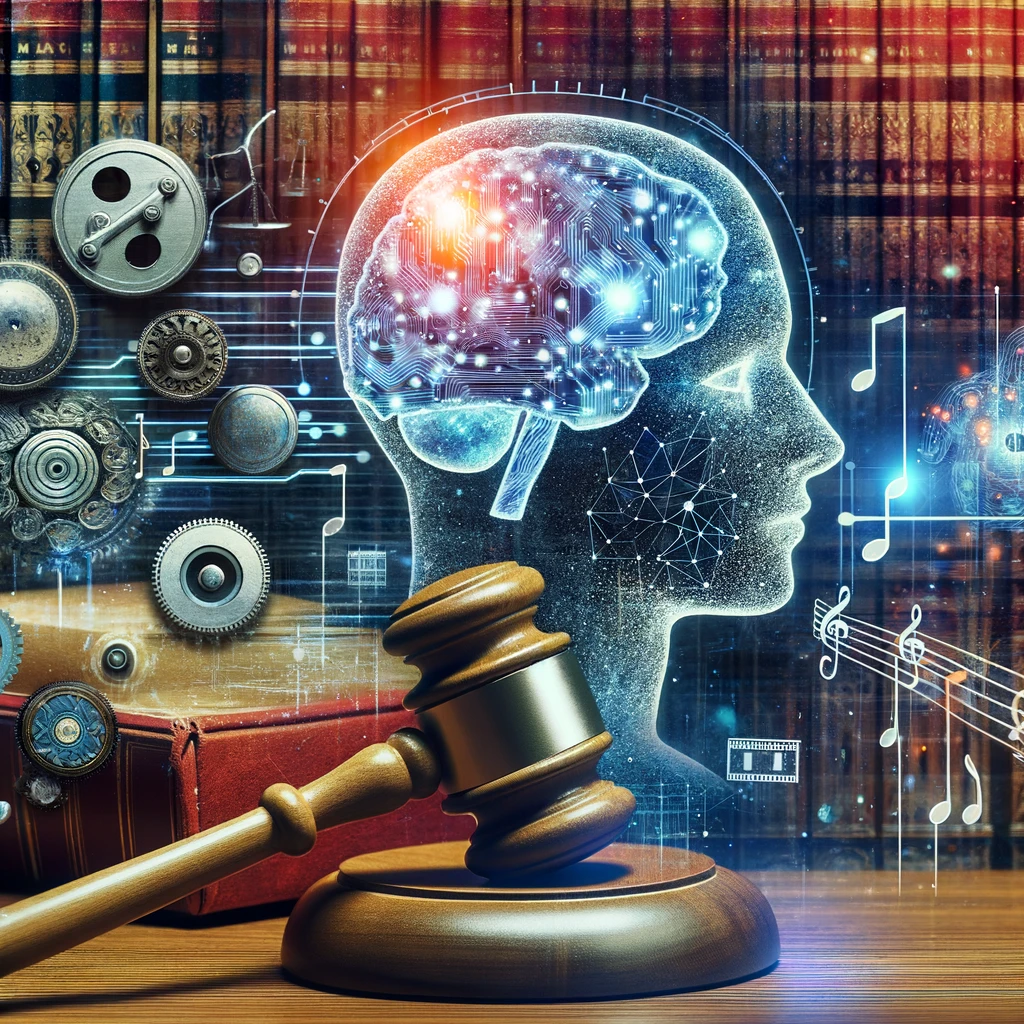
Exploring the intricate interplay between artificial intelligence, legal challenges, and the creative world.
- How is artificial intelligence challenging the current landscape of copyright law in various creative industries?
- What ethical dilemmas arise from the use of AI in replicating and disseminating copyrighted content?
- In what ways might future legal frameworks evolve to balance AI innovation with the protection of intellectual property rights?
The recent lawsuit by The New York Times against OpenAI and Microsoft, as reported by Michael M. Grynbaum and Ryan Mac (read their full article), is not just a landmark legal challenge; it is a narrative that unfolds the intricate interplay between AI’s innovative prowess and the age-old tenets of copyright law. The Times, alleging the use of its “uniquely valuable works,” highlights a fundamental question: how do we navigate the murky waters where AI’s thirst for data collides with intellectual property rights?
The Times’ Allegations: A Quest for Justice
At the heart of The Times’ lawsuit is the contention that millions of its articles were harnessed to train AI models, potentially diverting readers and revenue from the publication. The Times demands accountability for “billions of dollars in statutory and actual damages” stemming from the “unlawful copying and use” of its content. This bold move underlines a broader struggle for countless creators whose work is the lifeblood of cultural and intellectual discourse.
The Ethical Implications: AI’s Double-Edged Sword
The case epitomizes the ethical complexities surrounding AI. While AI can enhance access to information, its ability to replicate and disseminate content raises critical questions about the erosion of originality and the value of human creativity. This ethical labyrinth is accentuated by The Times’ concern over the potential replacement of traditional journalism with AI-generated content, risking a significant loss in journalistic integrity and depth.
Beyond The Times: A Litany of Legal Battles
This legal skirmish is part of an emerging trend, as seen in other cases involving Getty Images, Stability AI, and Meta. Each case adds layers to the debate on the permissible extent of AI’s use of copyrighted material. Richard Tofel, a former president of ProPublica, reflects on this trend, noting, “A Supreme Court decision is essentially inevitable,” hinting at the profound legal implications these cases could have.
A Kaleidoscope of Legal Challenges in the AI Arena
The legal landscape of AI is not just shaped by The New York Times’ lawsuit against OpenAI and Microsoft but is also colored by a multitude of other cases, each adding a unique hue to the narrative. From Thomson Reuters suing ROSS Intelligence over legal research technology in Thomson Reuters v. ROSS, to the Copilot Litigation involving GitHub’s AI-assisted coding tool and its use of copyrighted code, the spectrum of legal challenges is vast and varied.
The Visual Realm: Getty Images and Stability AI’s Confrontation
In the visually creative domain, Getty Images v. Stability AI emerges as a pivotal case. Here, Getty Images takes on Stability AI for using its copyrighted images in AI-generated content, signaling a significant battle in the visual arts field. The Andersen v. Stability AI case follows a similar trajectory, underscoring the tensions between AI’s capabilities in image generation and the rights of visual content creators.
Literary Works and AI: The Tremblay/Silverman and Chabon Litigations
The literary world is not immune to AI’s disruption. Tremblay/Silverman v. OpenAI and Chabon v. OpenAI represent crucial moments where the use of copyrighted literary content in training AI models comes under scrutiny. These cases illuminate the complexities of AI’s interaction with the nuanced and deeply personal realm of literary creation.
Meta’s Legal Entanglements: The Kadrey and Huckabee Cases
Meta (formerly Facebook) finds itself at the center of two intriguing lawsuits: Kadrey v. Meta and Huckabee v. Meta. Both cases delve into the implications of using copyrighted material in Meta’s AI systems, highlighting the ongoing challenges tech giants face in balancing AI development with copyright laws.
AI: A Reflection of Our Collective Creativity and Legal Quandaries
Each of these cases, while distinct in their specifics, weaves into the broader tapestry of AI’s legal and ethical journey. They reflect the multifaceted challenges and opportunities AI presents, not just in one field, but across the entire spectrum of human creativity. From legal texts and coding to photography and literature, AI’s reach is extensive, as are the legal and ethical questions it raises.
The Economic and Competitive Stakes
The Times’ lawsuit also sheds light on the economic implications of AI’s use of copyrighted content. The complaint cites instances where AI-generated responses, based on The Times’ journalism, could dissuade readers from visiting the publication’s site, thus impacting advertising and subscription revenues. This scenario illustrates a new competitive landscape where AI platforms could inadvertently become rivals to the very sources they rely on for information.
AI’s Impact on Media and Beyond
The lawsuit highlights the potential for AI to impact the media industry profoundly. For instance, the suit notes how Microsoft’s Bing, powered by ChatGPT, reproduced results from The Times’s Wirecutter almost verbatim, without proper attribution or links. This points to a broader concern: AI’s capacity to inadvertently undermine the economic models of media organizations.
Diverse Domains: AI’s Ripple Effect Across Industries
AI in Music and Film: A New Creative Frontier
The influence of AI extends beyond the realms of journalism and literature, making significant inroads into the music and film industries. In music, AI is being used for everything from composing new pieces to analyzing trends for better market predictions. This raises questions about the originality of AI-created music and its implications for copyright in a domain deeply rooted in individual creativity and expression.
Similarly, in the film industry, AI is revolutionizing both the creative and business aspects. From scriptwriting assisted by AI algorithms to AI-driven editing software that can predict audience reactions, the technology is reshaping how films are created and marketed. However, this also opens up debates on the authenticity of AI-assisted creativity and the potential for AI to influence cinematic narratives based on data-driven insights rather than artistic vision.
Balancing Innovation and Authenticity
As AI becomes more prevalent in these industries, the challenge lies in maintaining a balance between leveraging AI for innovation and preserving the authenticity of the human creative process. The legal frameworks currently grappling with issues in journalism and literature will likely need to evolve to address similar concerns in music, film, and other creative industries.
AI’s Broader Impact: An Interdisciplinary Challenge
Understanding AI’s impact on these diverse fields underscores the interdisciplinary challenge it presents. It’s not just a matter of legal considerations but also an exploration of how AI intersects with cultural, artistic, and ethical dimensions. As AI continues to evolve, its role in shaping the landscape of human creativity across various sectors will undoubtedly remain a key topic of discussion and exploration.
The Way Forward: A Call for Balanced Innovation
As we grapple with these challenges, the path forward requires a delicate balance. There’s a need for a paradigm that fosters AI innovation while respecting and protecting the sanctity of intellectual property. This balance is crucial to ensuring that AI serves as a tool for human advancement, not a detriment to creative and journalistic endeavors.
Envisioning Tomorrow: The Evolving Landscape of AI and Creative Rights
As the legal battles, like the one initiated by The New York Times, unfold in courtrooms, they are more than mere disputes over existing laws; they are the catalysts reshaping the future interplay of AI, copyright, and ethical norms. These confrontations are not just isolated incidents but harbingers of a broader revolution in how we perceive and interact with AI-driven creativity.
Looking ahead, we can anticipate a landscape where AI’s role in creative processes is more clearly defined and ethically grounded. Emerging AI technologies, advancing beyond current capabilities, may soon offer unprecedented tools for content creation, while simultaneously posing new challenges for intellectual property laws. We might see AI evolving from a mere tool for generating content to becoming a collaborative partner in the creative process, raising intriguing questions about authorship and originality.
In the not-so-distant future, legal frameworks could be reimagined to accommodate these advancements. For instance, new categories of copyright might emerge, specifically tailored for AI-generated content, balancing protection for original human creators while acknowledging AI’s growing role. Similarly, we might witness a surge in innovative licensing models, allowing for more fluid collaboration between AI and human creators.
Furthermore, as AI continues to integrate into various creative sectors, it could lead to the formation of interdisciplinary committees or regulatory bodies, dedicated to navigating the ethical and legal nuances of AI in creativity. These bodies might play a crucial role in steering AI development towards ethical and culturally sensitive applications, ensuring that AI’s integration into our creative worlds is not only innovative but also responsible and inclusive.
In essence, the journey ahead is poised to redefine the boundaries between technology and human ingenuity. As we embrace the complexities of this digital era, the ultimate goal remains to forge a future where AI and human creativity coexist in a symbiotic relationship, each pushing the boundaries of the other, paving the way for a new era of innovation and artistic expression.
